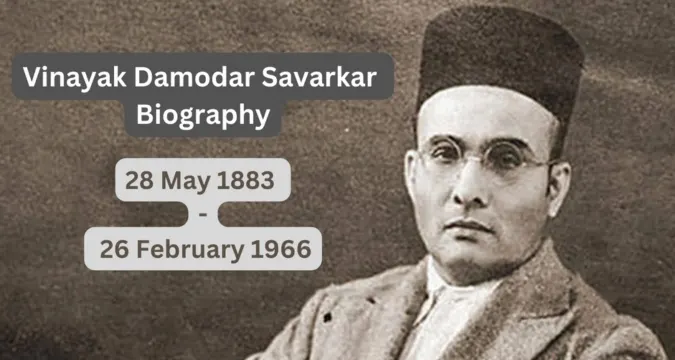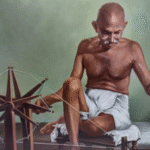A Contested Life Of Vinayak Damodar Savarkar
Vinayak Damodar Savarkar is one of the most debatable personalities in modern India. To some he is a strict nationalist and the spiritual father of Hindutva. To others, however, his activities and above all his clemency petitions to the British, his political activities in the 1930s and 1940s and his links to right wingy networks makes him a figure of criticism and even disloyalty.
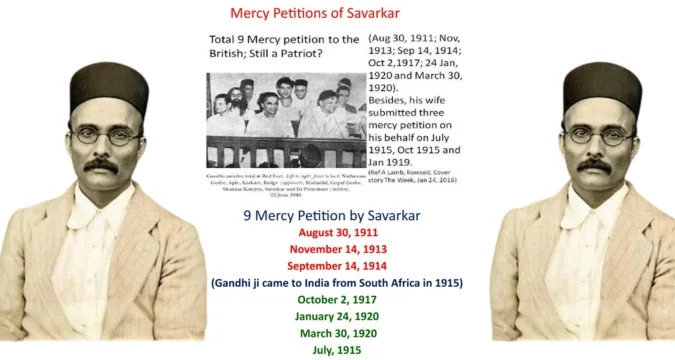
Vinayak Damodar Savarkar also known as Veer Savarkar plays a key role in two substantial controversies of contemporary Indian memory. To begin with, the question of measuring the life of a political actor who passed the path of violent revolting, to ideological politics and legislative activity should be posed. Second, what ought the country to do against deeds made in utter duress, as petitions of clemency made by prison-cells of colonial order? The two debates are not merely historical but provide an influence on modern politics, identity language and policy. This paper presents the sequence, the main testimony, the academic interpretation and the ongoing debate to allow the reader to make their own decisions.
Young and Revolutionary Years (1883-1910)
Vinayak Damodar Savarkar was born on 28 May 1883 to Bhagur near Nashik in the present-day State of Maharashtra. During his youth he had become entangled with radical nationalist groups. During the initial 10 years of the 20th when he was finishing his education, he co-founded Mitra Mela which became the Abhinav Bharat, a secret revolutionary group which had some of the youthful militants of its membership. Three years spent in London (to study law) exposed Savarkar to contacts with India House and the living world of expatriate revolutionary activists who believed in direct action against the British imperial apparatus. The last focus of these activities was a jail stay that resulted in the arrest, trial, conviction and sentencing of life imprisonment on transportation.
Key Dates and Facts
- Born: 28 May 1883 (Bhagur)
- Sentenced: After trial at Nasik, Cleopatra United Case 1910 Convicted on the 1910 overlapping charge and sent to the Cellular Jail (Andamans) in 1910. That single sentence was decades of punishment.
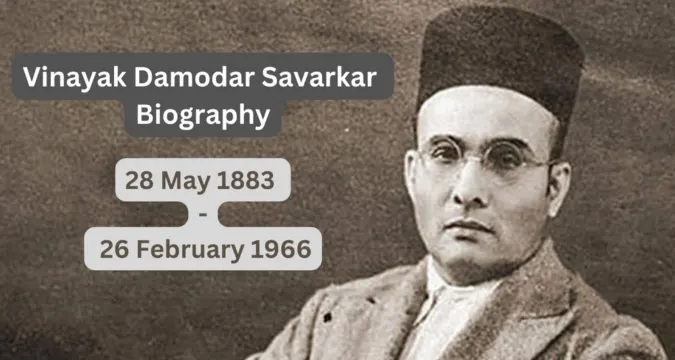
Prison, Petitions and Parole: The Factual Record (1911-1924)
The reputation of the imprisonment in the Cellular Jail (Kala Pani) in Andamans (1911 onward) and subsequent confinement at Ratnagiri is the focus of the controversy of Savarkar. History reveals that he presented several mercy/clemency requests to the British Government between approximately 1911 and 1920. There are parts of those petitions in manuscript form in the archives and currently in reproduction and Savarkar admits or commands his release to please the British. That historical account is indisputable: the petitions exist. Historians fight over reasons and background.
In Practice What The Petitions Say
Even the language in the letters and the petitions is calculated to induce clemency; they recognize the truths of conviction and presuppose the mercy of the empire. The critics see this as a moral concession and a sign that he had colluded but the defenders insisted that the petitions were tactical such that he could come back to political life where he was able to mold people. It is the documentary literature of the petitions to interpret; it is the business of historians.
Release and Restrictions
Savarkar was turned to Ratnagiri and was later released under some restrictions of formal prison in 1924, albeit under years of supervision. In limited liberty he composed those ideas that were to become his theory of Hindutva.
Revolutionary to Ideologue: Hindutva and Political Activity(1922-1940s)
Under house arrest at Ratnagiri, Savarkar wrote his most famous ideological statement Hindutva: Who is a Hindu? (usually dated 1923). Within it he tried to formulate a political community which was based on shared ancestry, culture- and territory. This moved away from religious and philosophical Hinduism towards a political and ethnic conception of Hindu political identity. Scholars have considered the text as having been the intellectual origin of the movement that came to be the Hindutva movement.
Important aspects of the Hindutva of Savarkar
- Focus on land, shared descent and culture but not solely on religious activities to build nationhood.
- The conceptualization of Islam and Christianity as foreign to their political allegiances and inclusion of religions of Indian origin (Buddhism, Jainism, Sikhism) under the wider concept of Hindutva.
- These concepts have been reiterated as the key words to the subsequent Hindu nationalistic movements. Academic evaluations of his work identify areas of innovation as well as problematic omissions in his conception.
Political life H. Mahasabha, formation of alliances, position in the war H. Mahasabha, alliances, and wartime situation
Savarkar emerged as a major current in the Hindu Mahasabha and a vocal intellectual after release. What stands out is his stand in the 1930s and during world war II: he opposed the Quit India strategy championed by the Congress and income making out of politically viable opportunities; at some point even concerted efforts with equally non congress political parties in collaboration. His stand during the war and his conservatives in the post-prison period is construed by critics as evidence that he was concerned not with widespread anti-colonial unity, but with Hindu consolidation. Advocates respond that his policy was indicative of an international politics that was realist in nature rather than one based on the conservation of Hindu interests.
The death, arrest, trial and exoneration of Mahatma usually known as Gandhi (1948-1949).
Following the assassination of Mahatma Gandhi on 30 January 1948, a series of individuals related to Hindu Mahasabha networks were arrested. On 5 February 1948 Savarkar was arrested and accused of conspiracy and abetment. Of indisputable guilt were other accused leaders (especially, the 1949 special court trial acquittal of Savarkar due to lack of concrete evidence) including Nathuram Godse and Narayan Apte who were found guilty and sentenced to death. Trial record and subsequent investigations continue to be a point of debate: it is said that the acquittal was the right ruling; there is a disposition amongst critics of the verdict, activists and petitioners that there was flawed investigation and questions needing to be answered. These disputes are the ones that emerge in politics and in the courts decades later.
Important Nuance
A law is a court acquittal. The question being debated in the public is whether or not the investigation was being comprehensive, and whether or not political circles played a role in creating the environment that gave rise to the crime. That is another, evidential and moral question.
The reasons behind and reasons why the controversy started and has continued on.
Savarkar Causes Division of Opinion for Three Long-Lived Reasons
Surrender and the question of morality of the petitions of Clemency. The signed appeals to British authorities are documented evidence of primary evidence that Savarkar wanted mercy. To most people this clashes with their image of a harsh freedom fighter. To others the petitions are expedient and should be understood in the light of utter distress. Counterview Files
Ideology and exclusions. Savarkar progressive Hindutva is one that recreates the nation along these ethnic/cultural terms that privilege Hindu identity to the exclusion of minorities and solidify majoritarian politics, which are criticized by opponents as isolating minorities and instilling majoritarian politics. Both sides view it as a valid ideological alternative to the Congress age secular nationalism. The way the ideas were adopted and changed later by the organization of RSS and political movement that saw the rise of the BJP is considered in scholarship. savarkar.org.
Connection with radical elements, and the Gandhi assassination. Although he was legally acquitted, there is suspicion that Savarkar generates due to his social networks and historical company. The court decision failed to suppress the moral and political issues, re-entering into petitions and political discourse, including quite recent cases and submissions.
Critics Say
- The petitions of mercy demonstrate moral concession and, virtually, co-operation with colonial rule.
- Hindutva is a narrow-minded and even threatening doctrine in politics.
- Such connections between the networks of Savarkar and extremist actors should be deemed morally guilty irrespective of the absence of a substantial amount of legal guilt.
Defenders Say
- Prison petitions were both tactical and survival based; the political life was taken up again on release and him to Indian self-rule on an alternate register.
- Hindutva is an established political philosophy of cultural nationality instead of an invitation to hate.
- The fact in the case of the making of an infant Gandhi is acquitted by law in the Gandhi killings was too final; unproven allegations must not be transformed to be real political considerations.
The reality of the archival record (journalist guidebook)
- Should you be writing on Savarkar and wish to base arguments on evidence, see:
- published literary works including Hindutva (the text of Savarkar himself). Digital facsimiles exist.
- Documents of mercy petitions: a number of petitions are reprinted in archives, and in published studies; text excerpts and complete reproductions can now be found in the reproductions of the National Archives, and also in museum collections and other locations. These are main documents that should be used on the issue of surrender.
1948-49: trial records, final order of the special court and its commentaries are open records. Record on the final order acquittal with references to subsequent objections.
Current and Political Topicality (2020s)
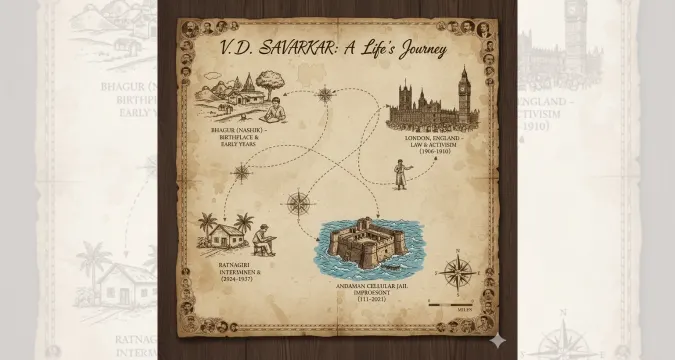
The drifting arguments of Savarkar are not just historic. They own his legacy today, by political actors. As an illustration, the high-profile legal submissions and public assertions went on through 2025 and the position of Savarkar in the societal memory is also utilized in the parliamentary inquiries and lawsuits. An example: A 2025 affidavit by a leading political figure claiming family connections with Nathuram Godse revived the figure back into the headlines and the courtrooms. Be vigilant about reports on such development: refer to the filing, not speculation.
FAQ
Who was Savarkar- Vinayak Damodar?
Vinayak Damodar Savarkar (28 May 1883 – 26 February 1966) was an Indian nationalist, author and ideologue, who formulated the political concept of the Hindutva and led the Hindu Mahasabha.
Was Savarkar apologetic to the British?
During his time in prison, Savarkar lived by writing several mercy or clemency applications; the documents are on record in archival reproductions. Historians do not unanimously agree that these petitions qualify as moral apology, a survival strategy, or an idea that is negotiated back to politics.
Did Savarkar conspire in the assassination of Gandhi?
However, in 1949, Savarkar was pulled up and accused of being a co conspirator in the assassination of Mahatma Gandhi, and was absolved by the special court due to the absence of any significant evidence. The law has it; there is still scholarly and political debate about the thoroughness of investigation.
What is the significance of Savarkar in the modern world?
Savarkar thought of Hindutva has become a significant benchmark in the future political movements and organizations and his legacy is being actively applied in modern political discussions.
SOURCES:
-
Vinayak Damodar Savarkar, Britannica entry. Encyclopedia Britannica
-
Savarkar, V. D., Hindutva: Who is a Hindu? (1923). Digital facsimile. Internet Archive
-
Reproductions of Savarkar’s mercy petitions (National Archives reproductions; PDFs reposted and discussed). Counterview Files
-
The 1949 special court order and contemporary summaries of the Gandhi assassination trial. Wikipedia
-
Christophe Jaffrelot and other scholars on Hindutva and its political afterlife; FT overview of contemporary context. assets.press.princeton.edu
-
Recent political filing (2025) where a leader claimed family links; shows ongoing contemporary relevance. The Times of India

